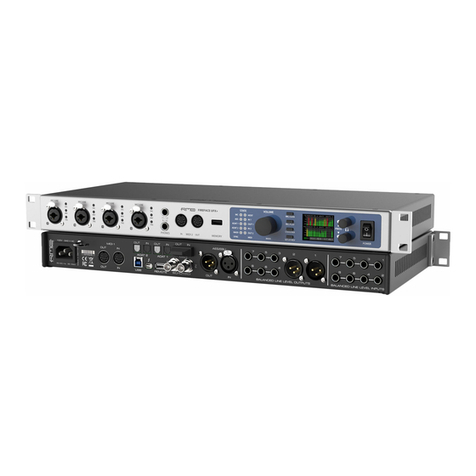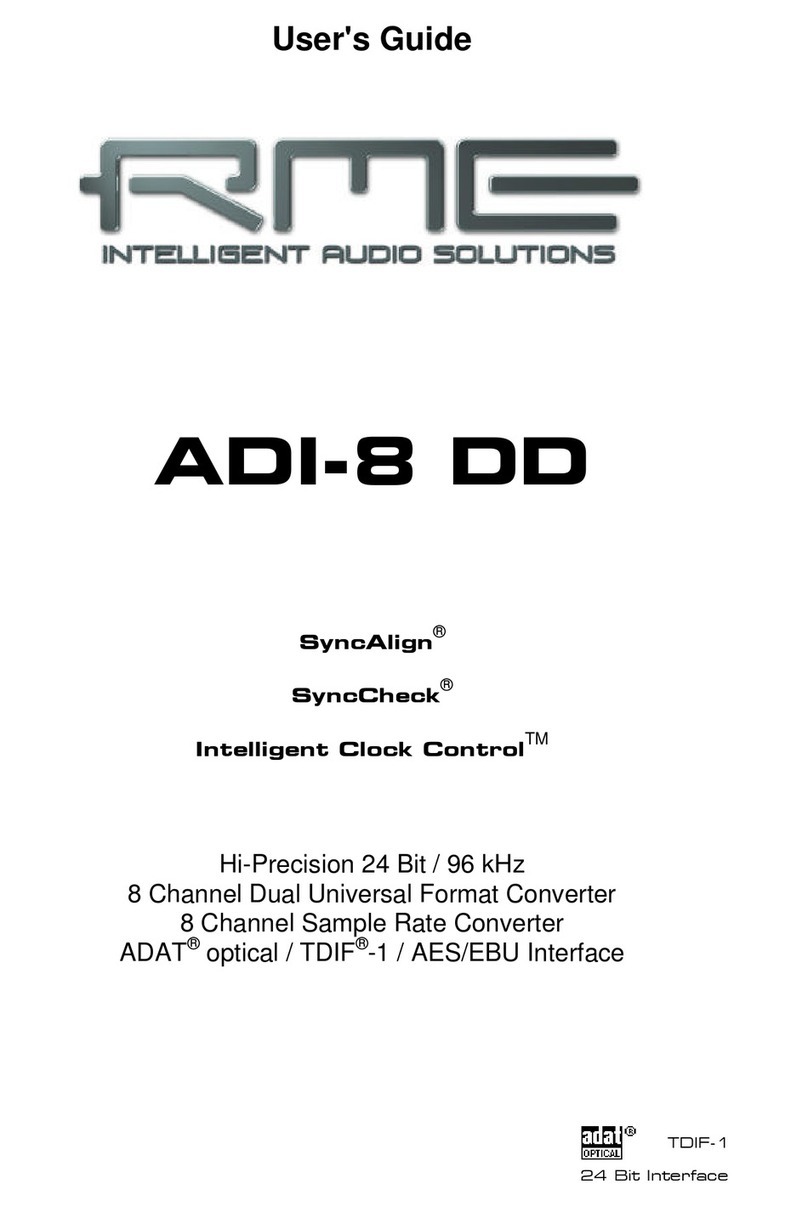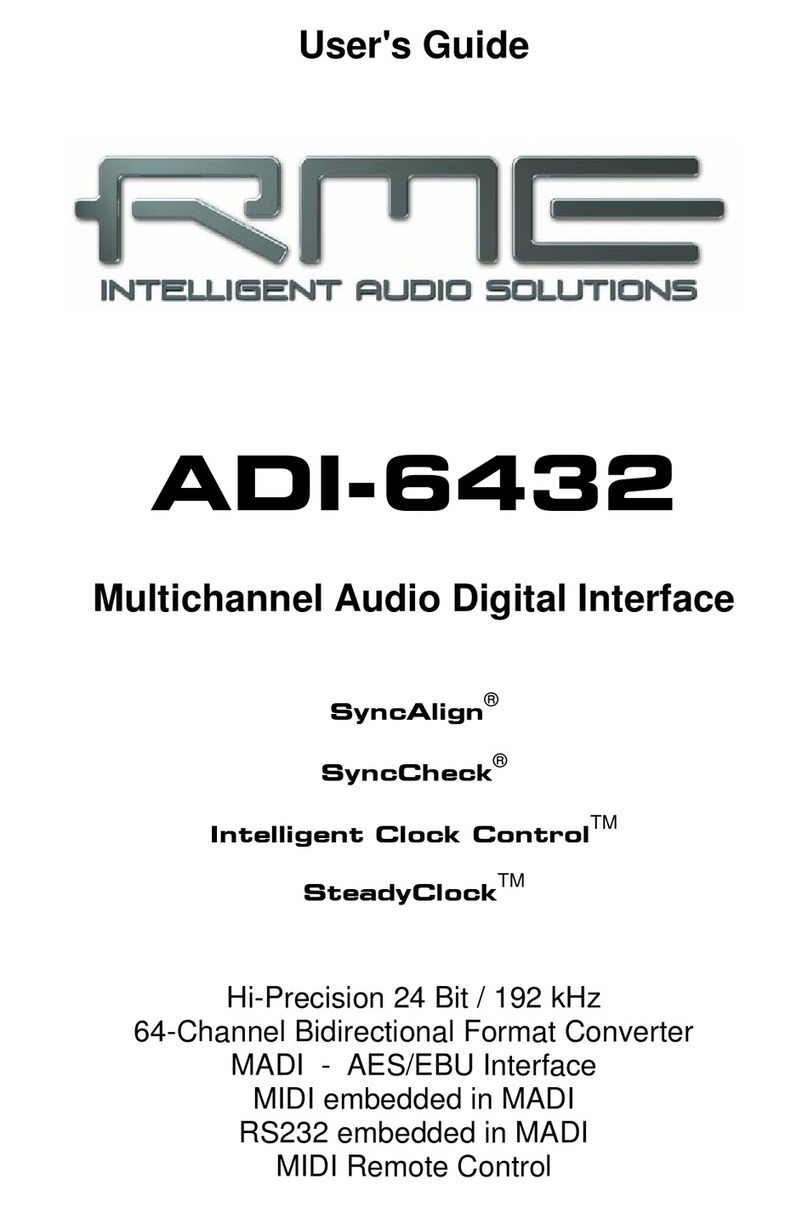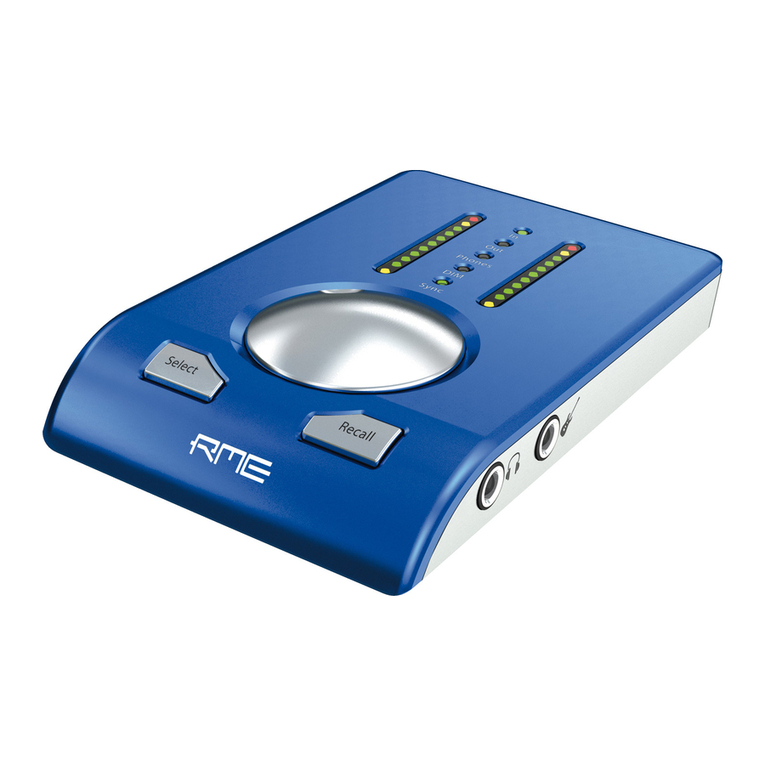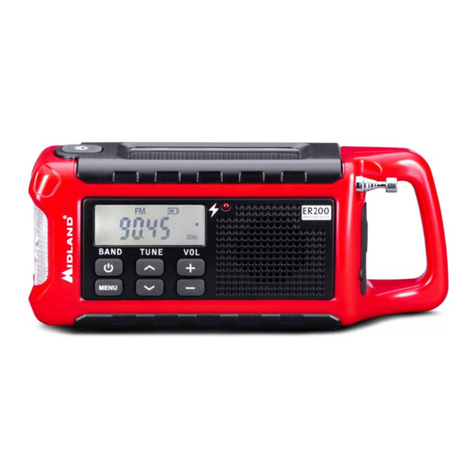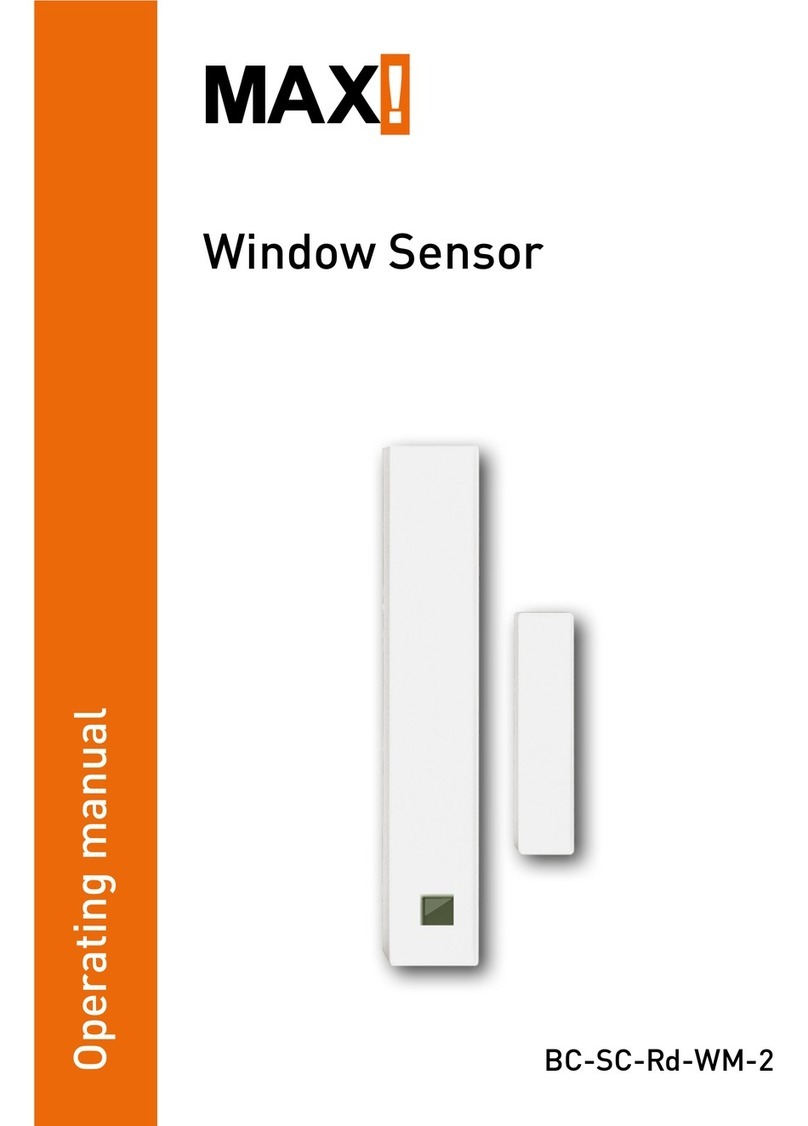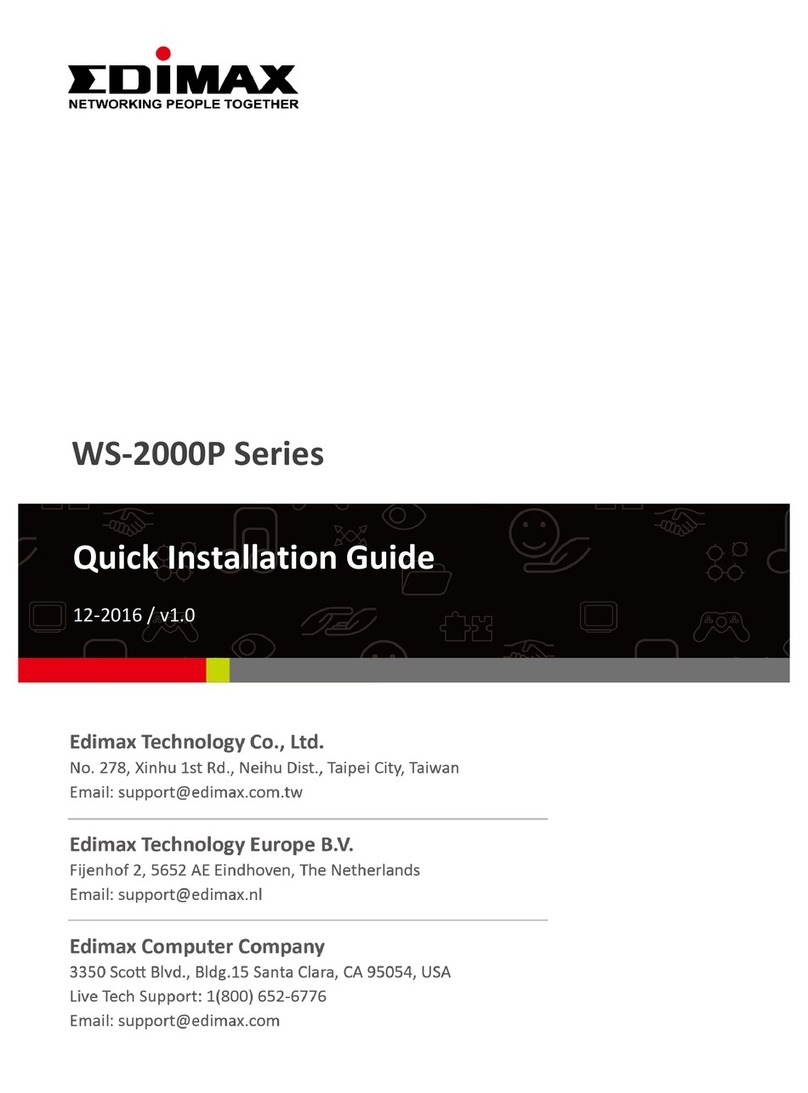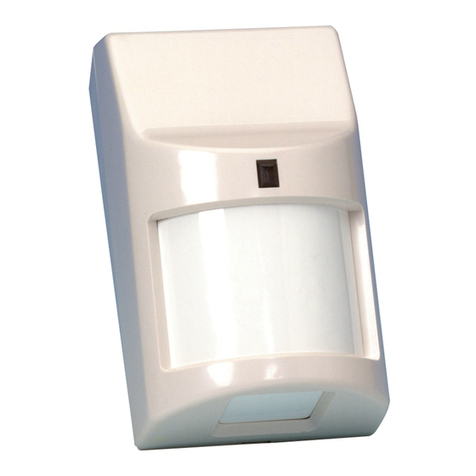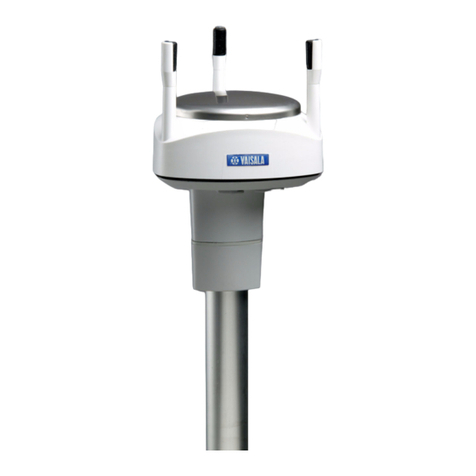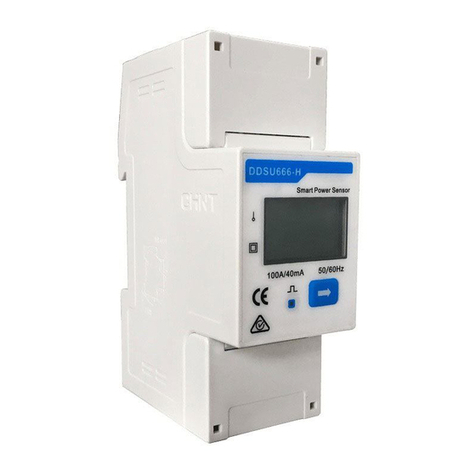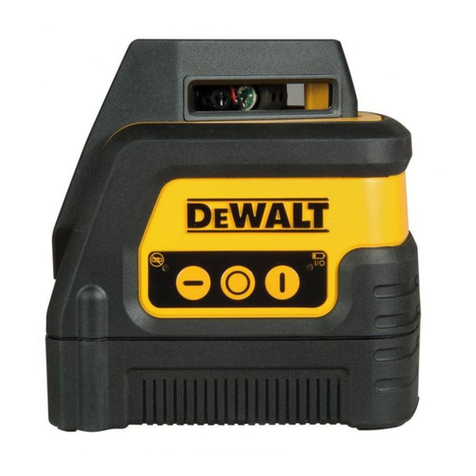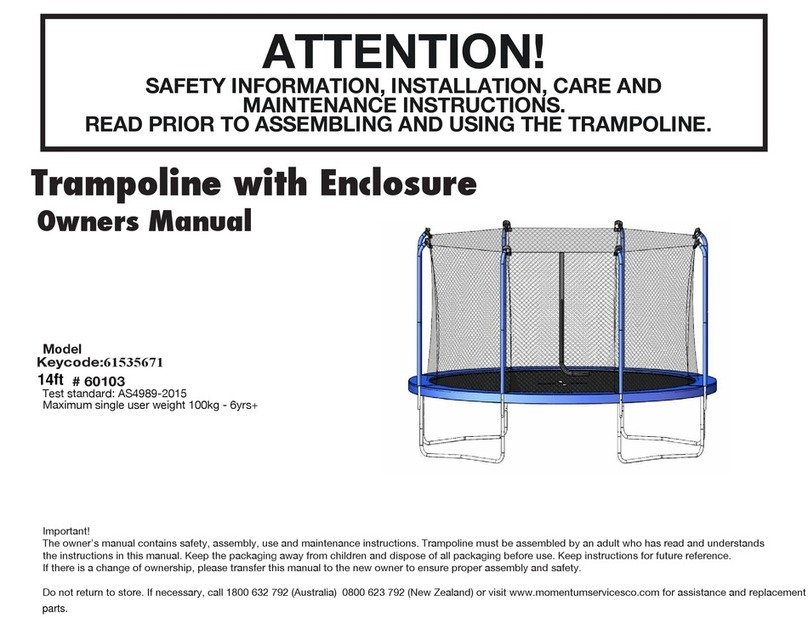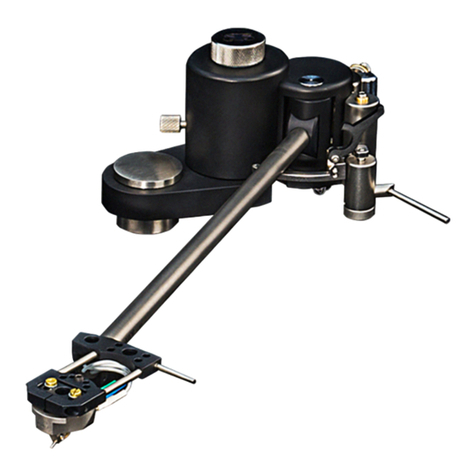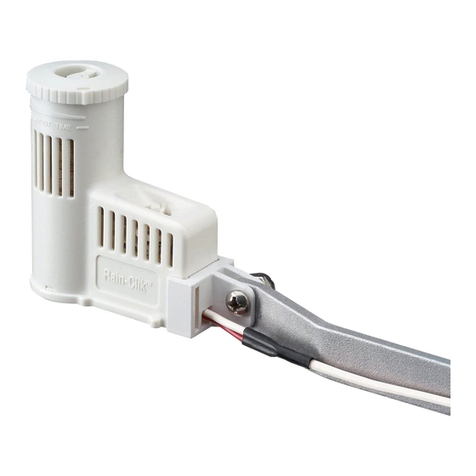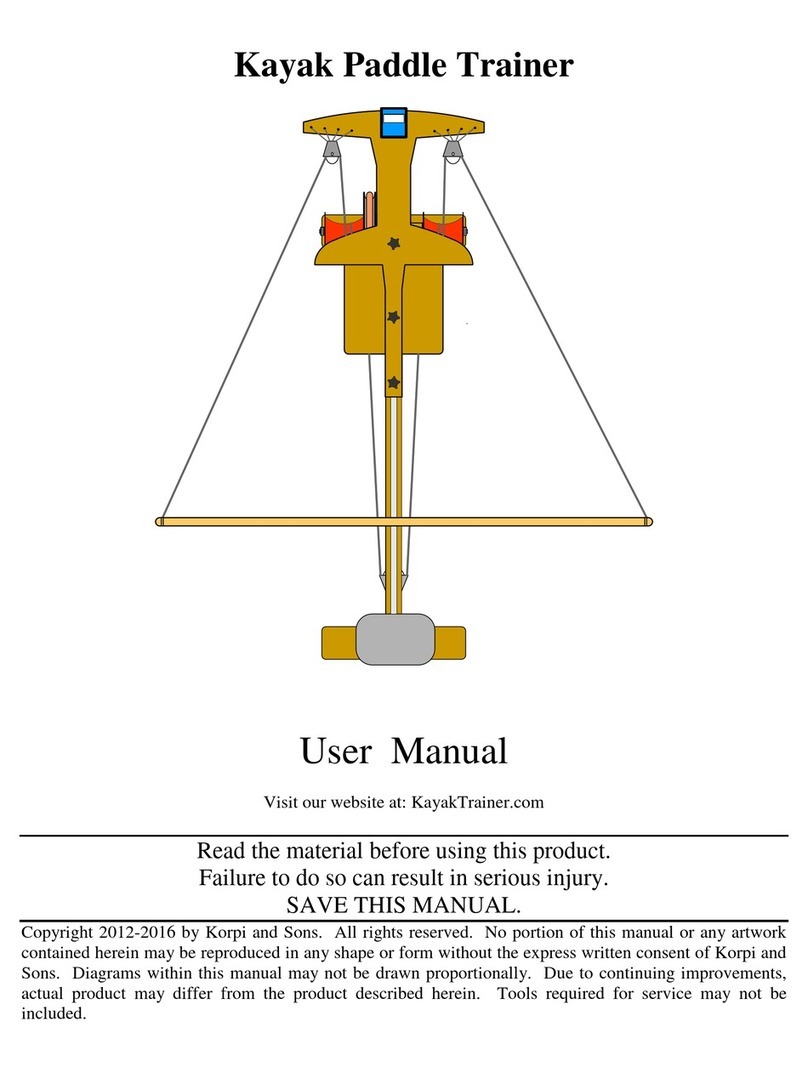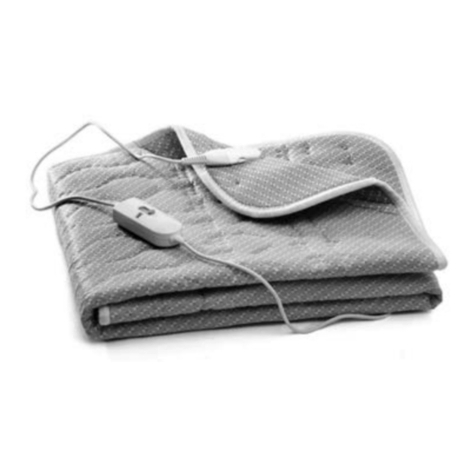RME Audio ADI-192 DD User manual

User's Guide
ADI-192 DD
SyncAlign™
SyncCheck™
Intelligent Clock Control™
Hi-Precision 24 Bit / 192 kHz
8-Channel Triple Universal Format Converter
8-Channel Sample Rate Converter
ADAT®optical - TDIF™- AES/EBU Interface
SteadyClock™
TDIF-1
24 Bit Interface

2 User's Guide ADI-192 DD © RME
General
1 Introduction ...............................................................6
2 Package Contents.....................................................6
3 Brief Description and Characteristics.....................6
4 First Usage - Quick Start
4.1 Controls and Connectors.......................................7
4.2 Quick Start .............................................................8
4.3 The DD plain and simple........................................9
5 Warranty...................................................................10
6 Appendix..................................................................10
Usage and Operation
5 Front Panel Controls
5.1 INPUT MONITOR ................................................14
5.2 SRC INPUT..........................................................14
5.3 CLOCK SECTION................................................15
5.4 AES OUTPUT......................................................16
5.5 TDIF OUTPUT .....................................................16
5.6 ADAT OUTPUT....................................................16
6 Inputs
6.1 AES/EBU..............................................................17
6.2 TDIF .....................................................................18
6.3 ADAT Optical .......................................................19
7 Outputs
7.1 AES/EBU..............................................................20
7.2 TDIF .....................................................................21
7.3 ADAT Optical .......................................................22
8 The Sample Rate Converter
8.1 General ................................................................23
8.2 Operation .............................................................23
8.3 Clock Decoupling using the SRC.........................25
8.4 The SRC as Signal Conditioner...........................25
9 Word Clock
9.1 Word Clock Input and Output...............................26
9.2 Technical Description and Background...............27
9.3 Cables and Termination.......................................28
Technical Reference
10 Technical Specifications
10.1 Inputs....................................................................30
10.2 Outputs.................................................................31
10.3 Digital ...................................................................31
10.4 Sample Rate Converter .......................................32
10.5 General ................................................................32
10.6 Connector Pinouts................................................32
10.7 Firmware..............................................................33
11 Technical Background
11.1 Terminology .........................................................34
11.2 Lock, SyncCheck and SyncAlign.........................35
11.3 DS – Double Speed .............................................36
11.4 QS – Quad Speed................................................36
11.5 AES/EBU – SPDIF...............................................37
11.6 Group Delay – I/O Latency ..................................38
11.7 SteadyClock.........................................................39
12 Block Diagram.........................................................40

User's Guide ADI-192 DD © RME 3
Important Safety Instructions
ATTENTION! Do not open chassis – risk of electric shock
The unit has non-isolated live parts inside. No user serviceable parts inside.
Refer service to qualified service personnel.
Mains
• The device must be earthed – never use it without proper grounding
• Do not use defective power cords
• Operation of the device is limited to the manual
• Use same type of fuse only
To reduce the risk of fire or electric shock do not expose this device to rain or
moisture. Prevent moisture and water from entering the device. Never leave
a pot with liquid on top of the device. Do not use this product near water, i. e.
swimming pool, bathtub or wet basement. Danger of condensation inside –
don't turn on before the device has reached room temperature.
Installation
Surface may become hot during operation – ensure sufficient ventilation.
Avoid direct sun light and do not place it near other sources of heat, like ra-
diators or stoves. When mounting in a rack, leave some space between this
device and others for ventilation.
Unauthorized servicing/repair voids warranty. Only use accessories
specified by the manufacturer.
Read the manual completely. It includes all information necessary
to use and operate this device.

4 User's Guide ADI-192 DD © RME

User's Guide ADI-192 DD © RME 5
User's Guide
ADI-192 DD
General

6 User's Guide ADI-192 DD © RME
1. Introduction
With the ADI-192 DD you have an incredibly versatile digital interface to your supply. The suc-
cessor of the highly successful ADI-8 DD is a completely re-engineered device, designed to be
the most powerful format and sample rate converter ever. What at first looks like a simple
AES/TDIF/ADAT format converter, turns out to be the universal problem solver at a closer look.
From small project studios to broadcast and television, the Universal Format Converter is the
perfect link between the formats mostly used today.
As a consequent continuation of RME's world-wide successful ADI series, the 192 DD also
contains elaborate technology and the latest integrated circuits. The ADI-192 DD is a uniquely
powerful and high-quality device, which will excite you even after many years of operation.
This manual has been divided into three parts:
•The first part is written as quick start guide. Even the first time user will be successfully up
and running with most of the typical applications addressed by the ADI-192 DD.
•The second part contains both basic and detailed information on all modes supported by the
ADI-192 DD, including sample multiplexing via Double and Quad Wire technology.
•The third part contains useful background information about the methods and technologies
found in the ADI-192 DD.
In case you want to dive deeply into the powerful features of the ADI-192 DD, please start with
chapter 11.1, Terminology.
2. Package Contents
Please check that your ADI-192 DD package contains each of the following:
•ADI-192 DD
•User's Guide
•Power chord
3. Brief Description and Characteristics
The ADI-192 DD consists of three 8-channel digital format converters, in a standard 19" box
with 1 unit height. The compact device has numerous extraordinary features like Intelligent
Clock Control (ICC), SyncCheck, SyncAlign, Bitclock PLL, patchbay functionality and active
jitter suppression through SteadyClock. Switchable high-end sample rate converters (SRC) in
reference quality allow for both sample rate conversion and clock decoupling on the highest
level.
All of the ADI-192 DD's I/Os support 192 kHz/24 bit. Since ADAT optical and TDIF are restricted
to 48 kHz, and AES is often limited to 48 or 96 kHz as well, the ADI-192 DD supports the so
called Sample Multiplexing in a unique way. Be it Double Wire, Quad Wire, S/MUX or S/MUX4 –
the ADI-192 DD receives and transmits in all these modes, and turns out to be the world's only
sample rate converter that can operate in these modes using all three interface formats.
The format conversion between AES/EBU, ADAT and TDIF operates in all directions at the
same time. LEDs of different colours show the present state of incoming and outgoing signals
and of the internal processing in a clear way.
The unique Intelligent Clock Control (ICC) allows for a flexible use with internal clock (44.1 up to
192 kHz), external word clock, or the digital input signals, thanks to a clear and easily under-
standable display of the Lock and Sync states. In short: the ADI-192 DD is a true Intelligent
Audio Solution.

User's Guide ADI-192 DD © RME 7
4. First Usage – Quick Start
4.1 Controls and Connectors
The front of the ADI-192 DD features nine buttons and 48 LEDs, providing all necessary means
for a detailed configuration of the unit, plus an optical SPDIF I/O with TOSLINK connectors.
INPUT MONITOR indicates a valid input signal separately for each digital input. Additionally,
RME's exclusive SyncCheck indicates if one of these inputs is locked, but not synchronous to
the others. See also chapter 5.1 and 11.2.
SRC INPUT defines source and frequency range of the sample rate converter's input signal.
In the CLOCK SECTION the current clock reference and frequency multiplier is chosen.
In the AES OUTPUT section, source, channel status and the optional sample multiplexing of
the AES/EBU outputs is selected.
TDIF OUTPUT defines which input signal appears at the TDIF output.
ADAT OUTPUT defines which input signal appears at the ADAT output.
The optical SPDIF I/O allows to use the first AES I/O port via TOSLINK cable.
The rear of the ADI-192 DD provides all the connections: eight AES/EBU (XLR), four ADAT
optical (TOSLINK), two TDIF (D-sub 25), three word clock (BNC), and mains power.
ADAT I/O MAIN (TOSLINK): Standard ADAT optical port.
ADAT I/O AUX (TOSLINK): Transmits further channels when sample multiplexing is active.
AES/EBU INPUTS (XLR): Transformer-coupled, high sensitivity, therefore accepts SPDIF sig-
nals as well.
AES/EBU OUTPUTS (XLR): Transformer-coupled, fully AES/EBU compatible.
TDIF-1 MAIN (D-sub 25): Standard TDIF port.
TDIF-1 AUX (D-sub 25): Transmits further channels when sample multiplexing is active.
WORD IN (BNC): A push switch allows to activate internal termination (75 Ohms). When termi-
nation is activated the yellow LED besides the switch lights up.
WORD OUT STD (BNC): Standard word clock output.
WORD OUT TDIF (BNC): Special word clock output for TDIF-based devices.
IEC receptable for power connection. The specially developed, internal hi-performance switch
mode power supply makes the ADI-192 DD operate in the range of 100V to 240V AC. It is
short-circuit-proof, has an integrated line filter, is fully regulated against voltage fluctuations, and
suppresses mains interference.

8 User's Guide ADI-192 DD © RME
4.2 Quick Start
In the INPUT MONITOR section 19 LEDs provide detailed information about the status of the
digital input signals. Displayed are Lock (flashing) and Sync (constantly lit), the frequency range
(Double or Quad Speed), a possible S/MUX indication on the ADAT input (DW), and the pres-
ence of audio data within the signal (Level).
SRC INPUT SOURCE is used to select the input signal of the sample rate converter. With sev-
eral special formats the unit can't detect the input signal's effective sample rate. Therefore the
frequency range has to be set manually via the RANGE button. In some cases the unit takes
over control, or limits the available choices intelligently. Example: With an input signal AES 192
kHz the RANGE QS LED automatically lights up and can't be switched off. However with an
input signal ADAT 48 kHz the unit can't know whether it receives 48 kHz (no LED), 96 kHz in
S/MUX format (DS), or 192 kHz as S/MUX4 (QS). So the right choice has to be performed
manually with the RANGE button.
The source and frequency range of the unit's clock is defined in the CLOCK SECTION. The
button CLOCK steps through the choices external clock (AES, TDIF, ADAT and word) and in-
ternal clock (44.1 or 48 kHz). The button STATE defines the sample rate range for both internal
and external clock. DS gives 88.2 and 96 kHz, QS gives 176.4 and 192 kHz respectively.
The input signal for each of the three outputs (output formats) is selected in the three OUTPUT
sections. Selecting the same input in the OUTPUT section as in the SRC INPUT SOURCE sec-
tion, the LED SRC indicates an activated sample rate conversion.
The section AES OUTPUT allows for further settings. The AES output signal can be chosen to
have Professional or Consumer status. Additionally at 88.2 and 96 kHz the output format Dou-
ble Wire (4 channels), and at 176.4 and 192 kHz Quad Wire (2 channels) can be selected.
Operating the ADI-192 DD with typical consumer devices is possible via the optical TOSLINK
jacks in the SPDIF I/O section. The optical input automatically replaces the rear XLR input
AES1, as soon as an SPDIF signal is detected. The optical output sends out the same signal as
the rear AES1 XLR output, i.e. channels 1/2, but carries a fixed channel status Consumer.
The ADI-192 DD stores all settings before switching off and sets them automatically when
switching on the next time.

User's Guide ADI-192 DD © RME 9
4.3 The DD plain and simple
The user interface of the ADI-192 DD is characterized by a clearly structured architecture and
an unambiguous labelling of the front and rear sides. Numerous LEDs show the state of the
device and of all incoming and outgoing signals in a strictly logical way.
A simplified block diagram of the ADI-192 DD shows in an easy to understand way, how the
different format converters work together and how they can be used in practice.
The three input formats AES/SPDIF, ADAT and TDIF on the left side are sent to three Output
Source selectors each. Using these selectors, the three outputs on the right side gain access to
any of the three inputs. As all three selectors operate independently, all three outputs can even
use the same input signal, so AES is converted to AES, TDIF and ADAT at the same time – just
an example. Any combination that one can imagine is allowed.
The big block diagram also printed on the unit's cover (see chapter 12) shows further details,
like the AES input jacks, Double Speed and Quad Speed conversion, and the clock control.
The big block diagram especially shows the way of operation of the ADI-192 DD's 8-channel
sample rate converter. The SRC has a choice of access to the input formats AES/SPDIF, ADAT
or TDIF. It is not possible to use the SRC with more than one format at a time. The SRC proc-
esses either AES/SPDIF, ADAT or TDIF. But the SRC's output signal is available at the
AES/SPDIF, ADAT and TDIF outputs simultaneously.
The unit's user surface includes a smart improvement not being shown in the block diagram.
When an OUTPUT is set to the same SOURCE that is selected as SOURCE of the SRC, the
OUTPUT SOURCE automatically changes to SRC. The fourth choice shown in the block dia-
gram, the SRC bus, is selected from the device itself, and not selectable via the OUTPUT but-
ton.

10 User's Guide ADI-192 DD © RME
5. Warranty
Each individual ADI-192 DD undergoes comprehensive quality control and a complete test at
IMM before shipping. . The usage of high grade components should guarantee a long and trou-
ble-free operation of the unit.
If you suspect that your product is faulty, please contact your local retailer.
Audio AG grants a limited manufacturer warranty of 6 months from the day of invoice showing
the date of sale. The length of the warranty period is different per country. Please contact your
local distributor for extended warranty information and service. Note that each country may
have regional specific warranty implications.
In any case warranty does not cover damage caused by improper installation or maltreatment -
replacement or repair in such cases can only be carried out at the owner's expense.
No warranty service is provided when the product is not returned to the local distributor in the
region where the product had been originally shipped.
Audio AG does not accept claims for damages of any kind, especially consequential damage.
Liability is limited to the value of the ADI-192 DD. The general terms of business drawn up by
Audio AG apply at all times.
6. Appendix
RME news and further information can be found on our website:
http://www.rme-audio.com
Distributor: Audio AG, Am Pfanderling 60, D-85778 Haimhausen, Tel.: (49) 08133 / 91810
Manufacturer:
IMM Elektronik GmbH, Leipziger Strasse 32, D-09648 Mittweida
Trademarks
All trademarks, registered or otherwise, are the property of their respective owners. RME,
DIGICheck and Hammerfall are registered trademarks of RME Intelligent Audio Solutions.
DIGI96, SyncAlign, ZLM, SyncCheck, TMS, TotalMix and ADI-192 DD are trademarks of RME
Intelligent Audio Solutions. Alesis and ADAT are registered trademarks of Alesis Corp. ADAT
optical is a trademark of Alesis Corp. Microsoft, Windows, Windows XP, Windows Vista and
Windows 7 are registered trademarks or trademarks of Microsoft Corp. S/MUX is copyright So-
norus.
Copyright ©Matthias Carstens, 02/2011. Version 1.4
All entries in this User's Guide have been thoroughly checked, however no guarantee for cor-
rectness can be given. RME cannot be held responsible for any misleading or incorrect informa-
tion provided throughout this manual. Lending or copying any part or the complete manual or its
contents as well as the software belonging to it is only possible with the written permission from
RME. RME reserves the right to change specifications at any time without notice.

User's Guide ADI-192 DD © RME 11
CE / FCC Compliance
CE
This device has been tested and found to comply with the limits of the European Council Direc-
tive on the approximation of the laws of the member states relating to electromagnetic compati-
bility according to RL2004/108/EG, and European Low Voltage Directive RL2006/95/EG.
FCC
This equipment has been tested and found to comply with the limits for a Class B digital device,
pursuant to Part 15 of the FCC Rules. These limits are designed to provide reasonable protec-
tion against harmful interference in a residential installation. This equipment generates, uses,
and can radiate radio frequency energy and, if not installed and used in accordance with the
instructions, may cause harmful interference to radio communications. However, there is no
guarantee that interference will not occur in a particular installation. If this equipment does
cause harmful interference to radio or television reception, which can be determined by turning
the equipment off and on, the user is encouraged to try to correct the interference by one or
more of the following measures:
- Reorient or relocate the receiving antenna.
- Increase the separation between the equipment and receiver.
- Connect the equipment into an outlet on a circuit different from that to which the receiver is
connected.
- Consult the dealer or an experienced radio/TV technician for help.
RoHS
This product has been soldered lead-free and fulfils the requirements of the RoHS directive.
ISO 9001
This product has been manufactured under ISO 9001 quality management. The manufacturer,
IMM Elektronik GmbH, is also certified for ISO 14001 (Environment) and ISO 13485 (medical
devices).
Note on Disposal
According to the guide line RL2002/96/EG (WEEE – Directive on Waste
Electrical and Electronic Equipment), valid for all european countries,
this product has to be recycled at the end of its lifetime.
In case a disposal of electronic waste is not possible, the recycling can
also be done by IMM Elektronik GmbH, the manufacturer of the ADI192
DD.
For this the device has to be sent free to the door to:
IMM Elektronik GmbH
Leipziger Straße 32
D-09648 Mittweida
Germany
Shipments not prepaid will be rejected and returned on the original sender's costs.

12 User's Guide ADI-192 DD © RME

User's Guide ADI-192 DD © RME 13
User's Guide
ADI-192 DD
Usage and Operation

14 User's Guide ADI-192 DD © RME
5. Front panel Controls
5.1 INPUT MONITOR
The status of the inputs is displayed by 19 LEDs. The section INPUT MONITOR helps to avoid
errors caused by wrong, missing or not correctly connected inputs, and makes handling the
digital formats much easier.
General
Each input has its own SYNC LED. If a valid input signal is applied, SyncCheck is active auto-
matically. When more than one input signal is present, the input with the lowest number serves
as reference. SyncCheck takes the chosen clock (internal, external, etc.) as reference and com-
pares it with the input clocks. Inputs which are not synchronous will be signalled by flashing of
the corresponding SYNC LED.
The LEVEL LED lights up as soon as the digital signal carries an information other than digital
zero. The channel doesn't matter. So with ADAT there is only one channel of audio information
necessary for the LED to light up. The amount of level is not indicated.
AES
An AES/EBU or SPDIF signal in the range of 60 kHz to 100 kHz will turn the DS (Double
Speed) LED on. An AES/EBU or SPDIF signal in the range of 162 kHz to 200 kHz will turn the
QS (Quad Speed) LED on.
ADAT
An ADAT signal with S/MUX signalling will let the DW (Double Wire) LED light up. Unfortunately
this information is insufficiently standardised, and is even set falsely from several devices.
Therefore the DW LED is just a user information, but does not cause any action in the ADI-192
DD. Devices from RME always send out a correct signalling.
5.2 SRC INPUT
The button SRC INPUT SOURCE defines the data path in which the sample rate converter will
be inserted: AES, TDIF or ADAT. With no LED lit, the SRC is deactivated. Selecting the same
input in the OUTPUT section as in the SRC INPUT SOURCE section, the LED SRC indicates
an activated sample rate conversion. Selecting the function SRC in the OUTPUT sections is not
necessary.
In many input formats, the input signal's effective sample rate stays unclear because of possible
sample multiplexing. Therefore the frequency range has to be defined manually with the
RANGE button:
No LED (Single Speed)
The effective sample frequency is in the range of 32 kHz up to 48 kHz.
DS (Double Speed)
The effective sample frequency is in the range of 64 kHz up to 96 kHz.
QS (Quad Speed)
The effective sample frequency is in the range of 176.4 kHz up to 192 kHz.
DS + QS (Multi-range Mode)
The effective sample frequency is in the range of 32 kHz up to 192 kHz. Note: keep the RANGE
button pressed to activate this mode. Only Single Wire input signals are supported. Can only be
activated when AES is selected.

User's Guide ADI-192 DD © RME 15
The function RANGE tells the SRC which frequency its input signal has. The frequency
of its output signal (the frequency the input signal shall be converted to) is defined in the
CLOCK SECTION.
More information is found in chapter 8, Sample Rate Converter.
5.3 CLOCK SECTION
The source and frequency of the unit's clock is configured in the CLOCK SECTION. The button
CLOCK lets you step through the options external clock (AES, TDIF, ADAT, word) and internal
clock (44.1 or 48 kHz). The button STATE sets internal, but also the external sample rate to
double or quadruple of the basic sample rate.
AES, TDIF, ADAT (Slave Mode)
ADAT, TDIF or AES input can serve as the clock reference. The choice is independent from the
processed audio signal. If the unit is currently used as TDIF to ADAT converter, the clock
source can still be AES, given that a valid AES signal is available. A missing or invalid clock
source signal is indicated by flashing of the corresponding LED.
WCK (Slave Mode)
Selects the word clock input as clock reference. The LED flashes in case the word clock signal
is missing or invalid.
44.1, 48 (Master Mode)
Activates the internal clock at 44.1 kHz or 48 kHz. Using the button STATE a choice of DS giv-
es 88.2 and 96 kHz, a choice of QS gives 176.4 and 192 kHz respectively.
With a setting of 44.1 and 48 (internal clock) it is mandatory that the clock rate of the
sources is synchronous to the ADI-192 DD. Therefore the external device has to be syn-
chronized to the ADI-192 DD's word clock out or AES/TDIF/ADAT out.
The ADI-192 DD thus has to be master, all devices connected to it slave (exception: the SRC
mode). In order to avoid clicks and drop outs due to faulty or missing synchronicity, a special
process called SyncCheck compares the incoming data and the ADI-192 DD's internal clock.
The SYNC state is indicated by a flashing (error) or constantly lit (OK) LED.
The button STATE is used to configure the ADI-192 DD, and with this all of its outputs, to the
frequency ranges Single Speed, Double Speed or Quad Speed.
Single Speed (no LED)
All outputs carry a signal in the range of 32 kHz up to 48 kHz.
Double Speed (LED DS)
All AES outputs carry a signal in the range of 64 kHz up to 96 kHz, except for an activated op-
tion DW in AES OUTPUT. ADAT and TDIF stay at no higher than 48 kHz, but the data is trans-
mitted in the S/MUX format.
Quad Speed (LED QS)
All AES outputs carry a signal in the range of 176.4 kHz up to 192 kHz, except for an activated
option DW or QW in AES OUTPUT. ADAT and TDIF stay at no higher than 48 kHz, but the data
is transmitted in the S/MUX4 format.
Follow Clock
In this special mode the ADI-192 DD follows the input clock of AES and Word automatically
over all three ranges. So at 96 kHz the DS LED automatically lights up, at 192 kHz the QS LED.
A manual configuration via the STATE button is no longer required. This function is deactivated
for the ADAT and TDIF input, as the sample rate range of these formats can not be detected
automatically.

16 User's Guide ADI-192 DD © RME
Activation of Follow Clock: while the firmware version is shown press the CLOCK STATE but-
ton. Both LEDs DS/QS light up. Deactivation: same, both LEDs stay dark.
5.4 AES OUTPUT
The input signal of the AES outputs is selected in the OUTPUT section. With no LED lit (no
input selected) the unit provides an empty frame signal of the current sample frequency. A
flashing LED indicates an invalid or missing input signal. Selecting the same input in the
OUTPUT section as in the SRC INPUT SOURCE section, the LED SRC indicates an activated
sample rate conversion.
AES STATE PRO (Professional) is default for the AES outputs. Selecting CON (Consumer)
provides the output signal with an SPDIF-compatible channel status.
The outputs of the ADI-192 DD support all currently known formats in the range of 32 kHz up to
192 kHz. The current output format is defined by the button STATE in the AES OUTPUT sec-
tion:
No LED (Single Wire)
8 channels 32 kHz – 192 kHz. 2 channels per AES wire. The effective sample frequency equals
the clock on the AES wire.
DW (Double Wire)
4 channels 88.2 – 192 kHz. 1 channel per AES wire. The effective sample frequency is double
the clock of the AES wire.
QW (Quad Wire)
2 channels 176.4 – 192 kHz. 1 channel via 2 AES wires. The effective sample frequency is four
times the clock of the AES wire.
All these conversions are lossless. Only the existing samples are spread on all the channels.
5.5 TDIF OUTPUT
The input signal of the TDIF output is selected in the OUTPUT section. With no LED lit (no input
selected) the unit provides an empty frame signal of the current sample frequency. A flashing
LED indicates an invalid or missing input signal. Selecting the same input in the OUTPUT sec-
tion as in the SRC INPUT SOURCE section, the LED SRC indicates an activated sample rate
conversion.
When selecting SOURCE TDIF in the TDIF OUTPUT section, some devices will generate
audio feedback, because in such a case their input and output is directly connected by the
ADI-192 DD.
5.6 ADAT OUTPUT
The input signal of the ADAT output is selected in the OUTPUT section. With no LED lit (no
input selected) the unit provides an empty frame signal of the current sample frequency. A
flashing LED indicates an invalid or missing input signal. Selecting the same input in the
OUTPUT section as in the SRC INPUT SOURCE section, the LED SRC signals an active sam-
ple rate conversion.

User's Guide ADI-192 DD © RME 17
6. Inputs
6.1 AES/EBU
At the rear side of the ADI-192 DD there are four XLR sockets for the AES/EBU inputs. Every
input is transformer-balanced and ground-free. Channel status and copy protection are being
ignored.
Thanks to a highly sensitive input stage,
also SPDIF signals can be processed by
using a simple cable adapter phono/XLR.
To achieve this, pins 2 and 3 of a male
XLR plug are connected individually to the
two pins of a phono plug. The cable shield-
ing is only connected to pin 1 of the XLR -
not to the phono plug.
The inputs can be used in any combination, e. g. it is sufficient to connect an input signal only to
input 3. In slave mode, this input is automatically being used as clock source. If more than one
signal is present, the one furthest left is being used as clock source, i. e. the active input with
the lowest number.
If only one AES input is used, the ADI-192 DD copies the stereo signal to all AES outputs, real-
izing a useful distribution mode where one AES signal is sent to four devices at the same time
(splitter/distributor). The distribution mode is also available when using the front SPDIF input.
Please note that this special function is only active in Single Speed operation, but also with
SRC activated.
The ADI-192 DD supports all currently known formats in the range of 32 kHz up to 192 kHz,
including sample multiplexing:
•Single Wire: 8 channels 32 kHz – 192 kHz. 2 channels per AES wire. The effective sample
frequency equals the clock on the AES wire.
•Double Wire: 4 channels 88.2 kHz – 192 kHz. 1 channel per AES wire. The effective sample
frequency is double the clock of the AES wire.
•Quad Wire: 2 channels 176.4 kHz – 192 kHz. 1 channel via 2 AES wires. The effective sam-
ple frequency is four times the clock of the AES wire.
Rearranging the formats Double and Quad Wire to Single Wire is lossless, the existing samples
are just re-ordered again. Information on the distribution of the samples in Double and Quad
Wire mode is found in chapter 7.1, Outputs AES.
The optional hi-end 8-channel sample rate converter can be used both for a conversion of the
sample rate and for clock decoupling of the AES/EBU inputs. See chapter 8, Sample Rate Con-
verter.
Emphasis
AES/EBU and SPDIF can contain Emphasis information. Audio signals with Emphasis have a
strong high frequency boost and thus require a high frequency attenuation on playback. If one
of the inputs detects Emphasis, this information is coded into all AES outputs, i.e. globally
passed on.
Emphasis is not available within the ADAT standard! This information is neither passed on
to the ADAT output, nor taken into account later on for acoustic transmission!

18 User's Guide ADI-192 DD © RME
6.2 TDIF
The ADI-192 DD has two TDIF-1 ports. In standard operation only the port labelled MAIN is
used. Higher sample rates than 48 kHz are realized by sample multiplexing. When using more
than four channels at Double Speed or two channels at Quad Speed, the port labelled AUX has
to be used as well.
The TDIF-1 connectors of the ADI-192 DD are fully compatible with all devices offering such an
interface*. RME's exclusive SyncCheck verifies synchronous operation when using both TDIF
ports. The connection is done through a special TDIF cable, available at your local dealer (Tas-
cam part number PW-88D).
TDIF-1 MAIN
Interface for the first or only device with a TDIF-1 interface. Carries the channels 1 to 8. When
transmitting a Double Speed signal MAIN carries the channels 1 to 4, in case of Quad Speed
channels 1 and 2.
TDIF-1 AUX
Additional port for transmission of channels 5 to 8 in Double, or 3 and 4 in Quad Speed mode.
With input signals in the Double Speed range, the SRC (RANGE) or the Clock Section (STATE)
have to be switched into DS mode manually, depending on the current application. Each port
carries the data of 4 channels only, for up to 8 channels MAIN and AUX have to be used. 16
input channels 44.1/48 kHz are converted to 8 channels 88.2/96 kHz as follows:
Channel
Port 1/2
MAIN 3/4
MAIN 5/6
MAIN 7/8
MAIN 1/2
AUX 3/4
AUX 5/6
AUX 7/8
AUX
Samples 1a/b 2a/b 3a/b 4a/b 5a/b 6a/b 7a/b 8a/b
With input signals in the Quad Speed range, the SRC (RANGE) or the Clock Section (STATE)
have to be switched into QS mode manually, depending on the current application. Each port
carries the data of 2 channels only, for up to 4 channels MAIN and AUX have to be used. 16
input channels 44.1/48 kHz are converted to 4 channels 176.4/192 kHz as follows:
Channel
Port 1/2
MAIN 3/4
MAIN 5/6
MAIN 7/8
MAIN 1/2
AUX 3/4
AUX 5/6
AUX 7/8
AUX
Samples 1a/b 1c/d 2a/b 2c/d 3a/b 3c/d 4a/b 4c/d
All the described conversions are lossless. The existing samples are just spread or re-united
between the channels.
General Notes
*DA98HR
The Quad Wire method of the ADI-192 DD allows to record two channels at up to 192 kHz with
every (!) DTRS device. Unfortunately Tascam's TDIF implementation is incompatible to Quad
Wire, as the samples are not transmitted in the order of 1-2-3-4, but 1-3-2-4. In case the special
192 kHz mode of the DA-98HR shall be used, the machine should be connected and used with
the ADI-192 DD via AES.
TDIF and Word Clock
When the ADI-192 DD is slave no additional word clock connection is necessary. In case DA88
and/or DA38 are slave the word clock output TDIF of the ADI-192 DD has to be connected to
the word clock input of the first (master) recorder. When using more than one recorder all ma-
chines should be connected with a special sync cable (Tascam part number PW-88S).
Emphasis
The ADI-192 DD's TDIF interface supports Emphasis. Please note that an Emphasis indication
is lost with transfers to ADAT optical. Emphasis does not exist in the ADAT specification.

User's Guide ADI-192 DD © RME 19
6.3 ADAT Optical
The ADI-192 DD has two ADAT optical inputs. In standard operation only the port labelled
MAIN is used. Higher sample rates than 48 kHz are realized by sample multiplexing. When
using more than four channels at Double Speed or two channels at Quad Speed, the port la-
belled AUX has to be used as well.
The ADAT optical inputs of the ADI-192 DD are fully compatible with all ADAT optical outputs.
RME's unsurpassed Bitclock PLL prevents clicks and drop outs even in extreme varipitch op-
eration, and guarantees a fast and sample accurate lock to the digital input signal. A standard
TOSLINK cable is sufficient for connection.
ADAT MAIN
Interface for the first or only device sending an ADAT signal to the ADI-192 DD. Carries the
channels 1 to 8. When receiving an S/MUX signal, MAIN carries the channels 1 to 4, in case of
S/MUX4 MAIN carries channels 1 and 2.
ADAT AUX
Additional port for receiving channels 5 to 8 in S/MUX, or 3 and 4 in S/MUX4 mode.
With input signals encoded as S/MUX, the SRC (RANGE) or the Clock Section (STATE) have
to be switched into DS mode manually, depending on the current application. Each port carries
the data of 4 channels only, for up to 8 channels MAIN and AUX have to be used. 16 input
channels 44.1/48 kHz are converted to 8 channels 88.2/96 kHz as follows:
ADAT
Port 1/2
MAIN 3/4
MAIN 5/6
MAIN 7/8
MAIN 1/2
AUX 3/4
AUX 5/6
AUX 7/8
AUX
Samples 1a/b 2a/b 3a/b 4a/b 5a/b 6a/b 7a/b 8a/b
With input signals encoded as S/MUX4, the SRC (RANGE) or the Clock Section (STATE) have
to be switched into QS mode manually, depending on the current application. Each port carries
the data of 2 channels only, for up to 4 channels MAIN and AUX have to be used. 16 input
channels 44.1/48 kHz are converted to 4 channels 176.4/192 kHz as follows:
ADAT
Port 1/2
MAIN 3/4
MAIN 5/6
MAIN 7/8
MAIN 1/2
AUX 3/4
AUX 5/6
AUX 7/8
AUX
Samples 1a/b 1c/d 2a/b 2c/d 3a/b 3c/d 4a/b 4c/d
All these conversions are lossless. The existing samples are just re-united across the channels.

20 User's Guide ADI-192 DD © RME
7. Outputs
7.1 AES/EBU
At the rear side of the ADI-192 DD there are four XLR sockets as AES/EBU outputs. Each out-
put is transformer-balanced, ground-free and compatible to all devices with AES/EBU ports.
Connection is accomplished using balanced cables with XLR plugs.
If AES STATE PRO (Professional) is chosen, the output level is almost 5 Volt. If CON (Con-
sumer) is chosen, the output signal will have a channel status compatible to SPDIF. As far as
we know, every SPDIF device should be capable of handling an input signal of up to 5 Volt in-
stead of the usual 0.5 Volt. Nevertheless the output level will be reduced to 2 Volt when CON is
selected.
Connecting devices with coaxial SPDIF
ports to the ADI-192 DD is accomplished by
a simple cable adapter XLR/phono. Pins 2
and 3 of a female XLR plug are connected
individually to the two pins of a phono plug.
The cable shielding is only connected to pin
1 of the XLR - not to the phono plug.
Besides the audio data, digital signals in SPDIF or AES/EBU format contain a channel status
coding, which is being used for transmitting further information. The output signal coding of the
ADI-192 DD has been implemented according to AES3-1992 Amendment 4:
•32 kHz, 44.1 kHz, 48 kHz, 64 kHz, 88.2 kHz, 96 kHz, 176.4 kHz, 192 kHz according to the
current sample rate
•Audio use
•No Copyright, Copy permitted
•Format Consumer or Professional
•Category General, Generation not indicated
•2-Channel, No Emphasis or 50/15 µs
•Single Channel Double Sampling Frequency Mode (Double Wire)
•Aux Bits Audio use, 24 Bit
•Origin: A192
Note that most consumer HiFi equipment (with optical or phono SPDIF inputs) will only ac-
cept signals in ‘Consumer’ format!
The status 'Professional' should always be active when sending data to a device with AES/EBU
inputs (when the XLR connectors are used).
If only one AES input is used, the ADI-192 DD automatically activates a distribution mode.
The single stereo signal will be copied to all four AES outputs.
This realizes a useful distribution mode, sending one AES signal to four devices at the same
time (splitter/distributor). The distribution mode is also available when using the front SPDIF
input. Please note that this special function is only active in Single Speed operation, but also
with SRC activated.
Table of contents
Other RME Audio Accessories manuals
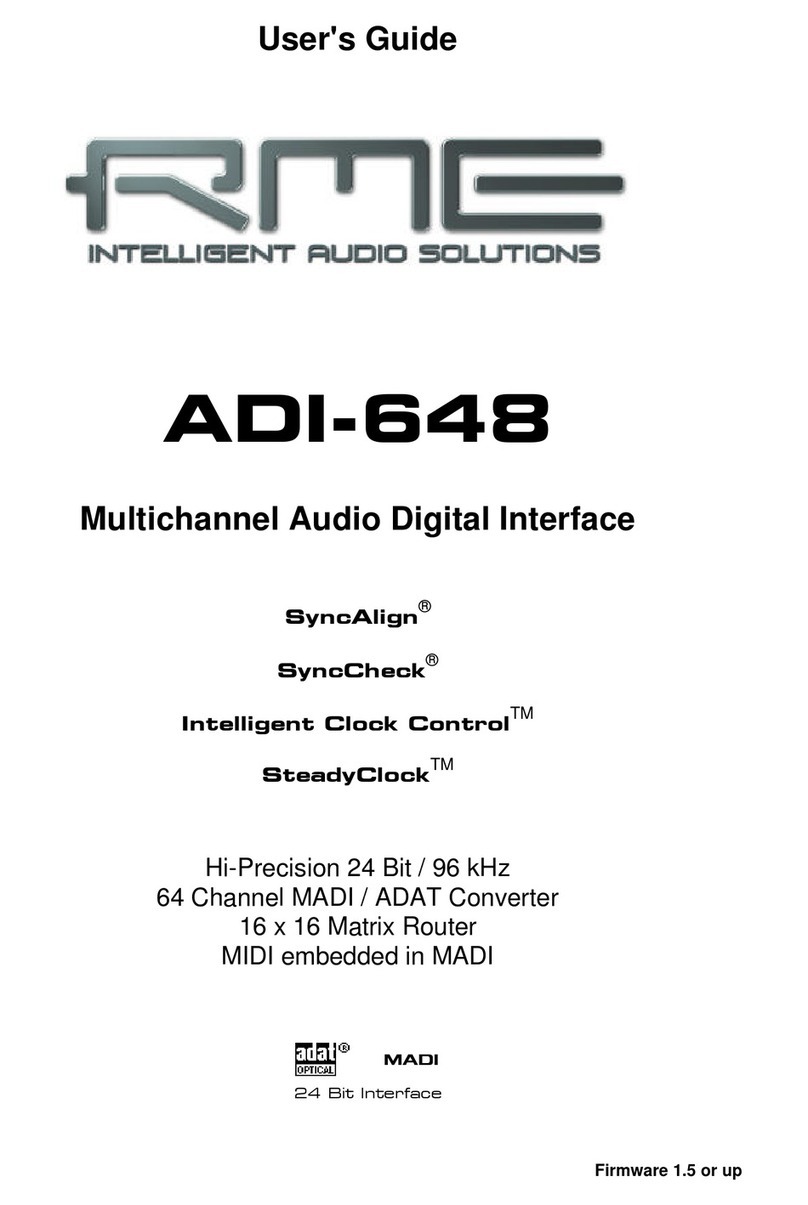
RME Audio
RME Audio ADI-648 User manual

RME Audio
RME Audio Fireface 400 User manual
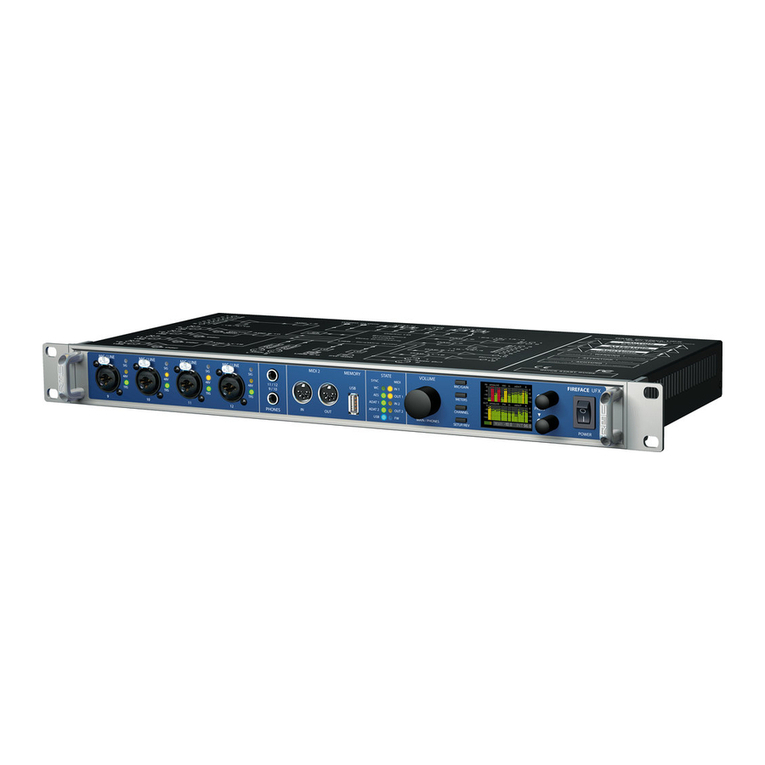
RME Audio
RME Audio Fireface UFX User manual
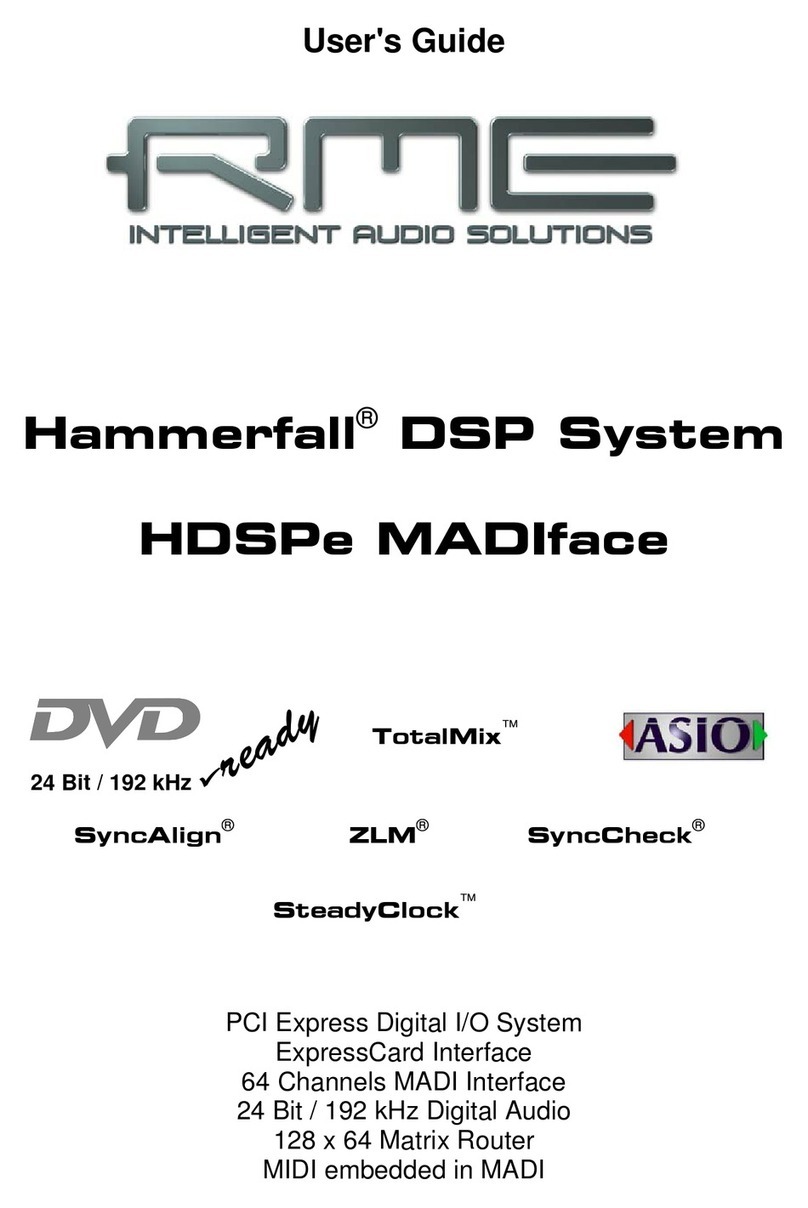
RME Audio
RME Audio Hammerfall HDSPe MADIface User manual
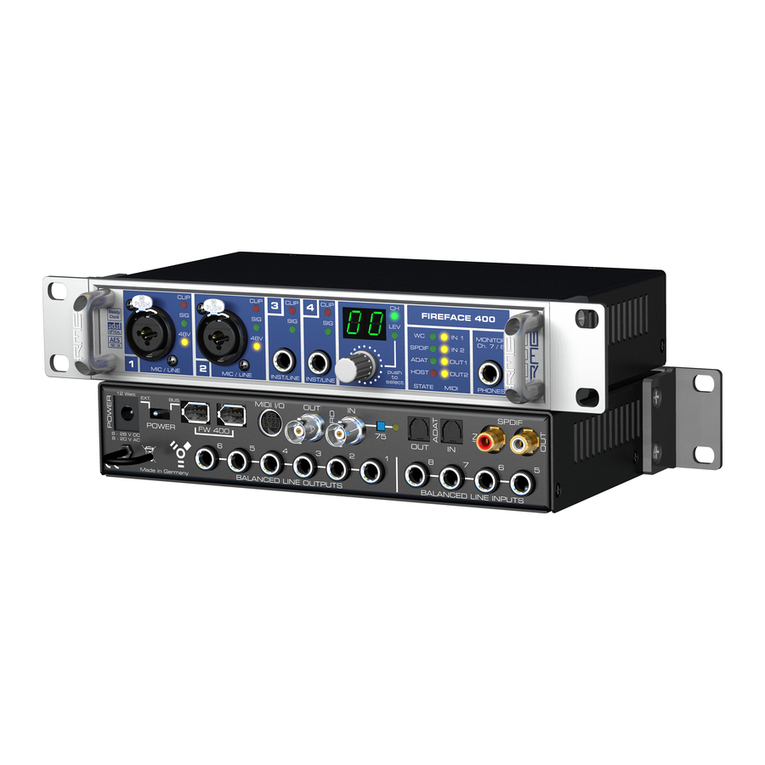
RME Audio
RME Audio Fireface 400 User manual
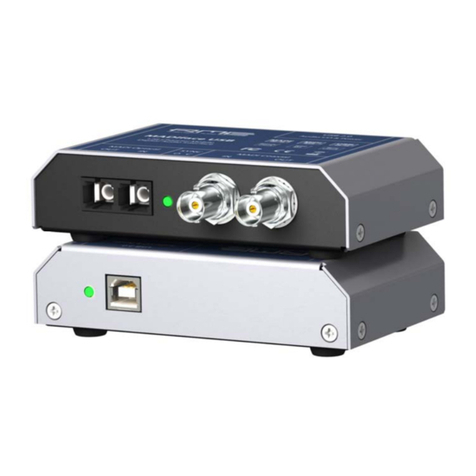
RME Audio
RME Audio MADIface USB User manual
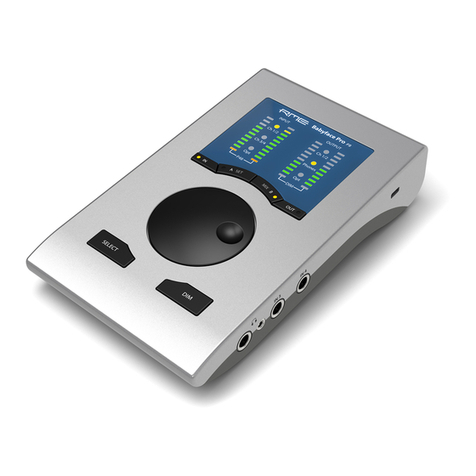
RME Audio
RME Audio Babyface Pro User manual
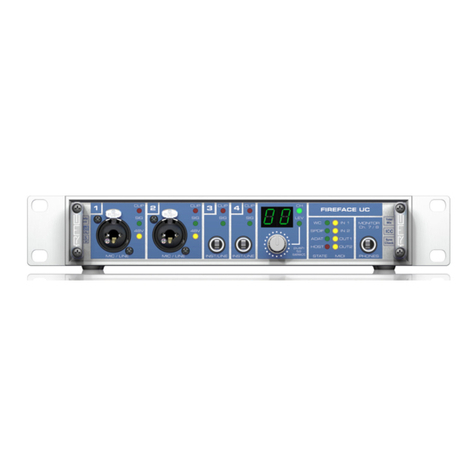
RME Audio
RME Audio Fireface UC User manual
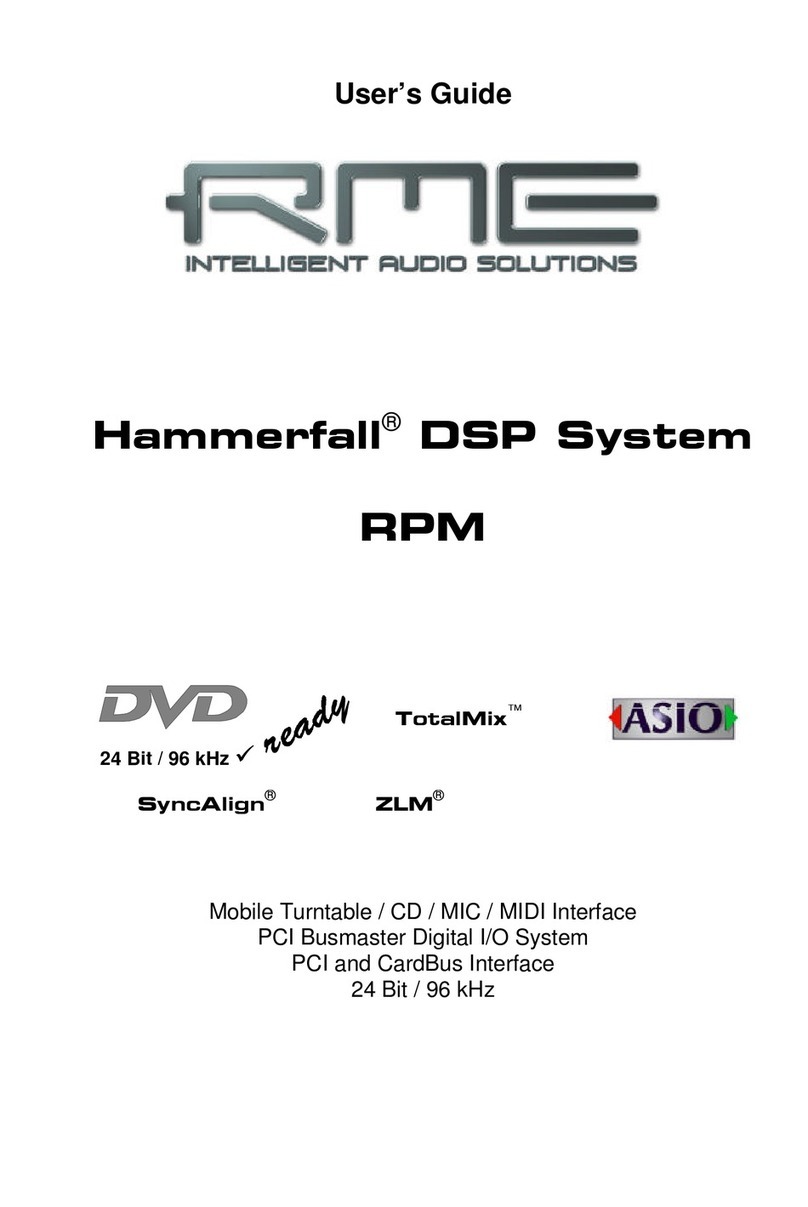
RME Audio
RME Audio Hammerfall RPM User manual
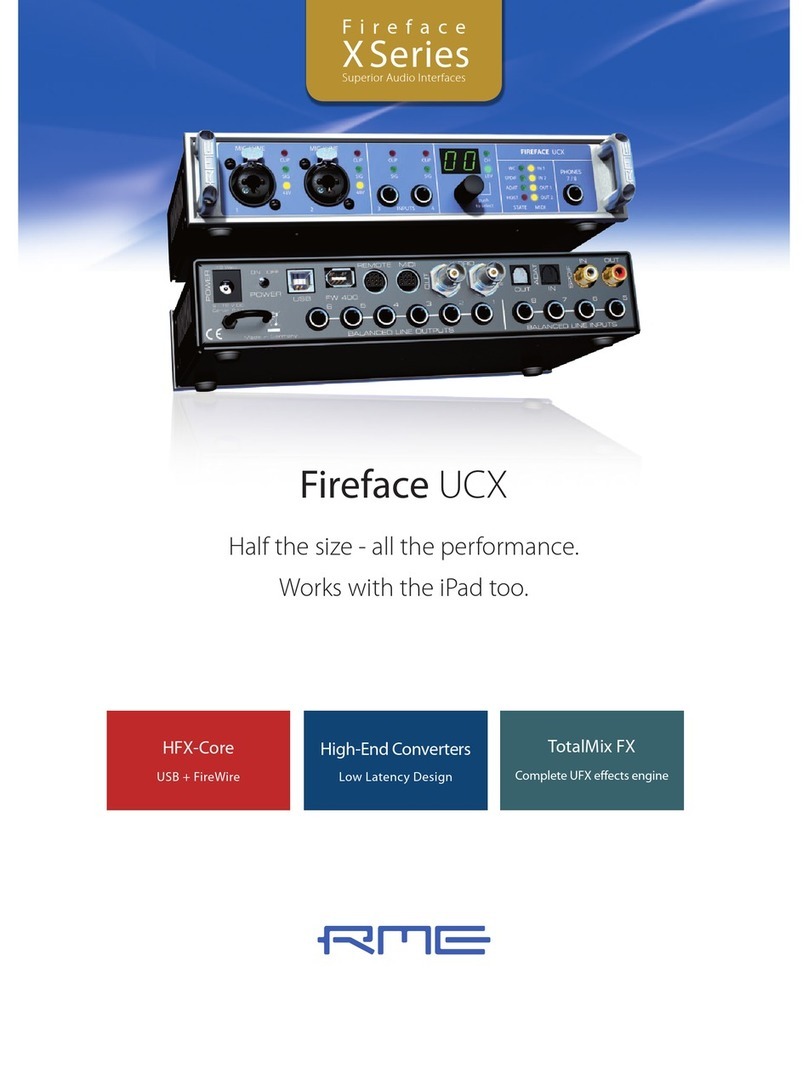
RME Audio
RME Audio Fireface UCX User manual
